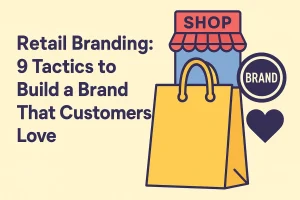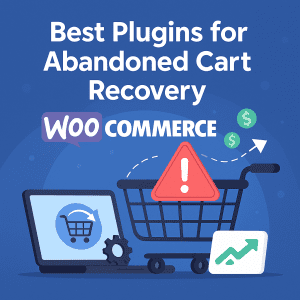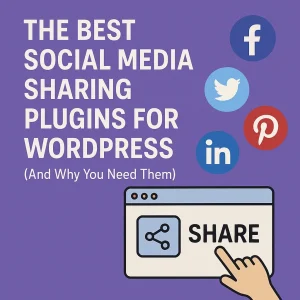 When every best is now discarded because there are too many commodities, businesses begin competing on price. In everything ranging from consumer goods to retail, this attitude has formed much of modern strategy to create something that seems like a paradox: Consumers today have more choice than ever before. A simple online search can lead to dozens of stores, all offering practically similar organic cotton t-shirts, soy candles, or sleek water bottles-this.
When every best is now discarded because there are too many commodities, businesses begin competing on price. In everything ranging from consumer goods to retail, this attitude has formed much of modern strategy to create something that seems like a paradox: Consumers today have more choice than ever before. A simple online search can lead to dozens of stores, all offering practically similar organic cotton t-shirts, soy candles, or sleek water bottles-this.
Now every modern retailer must grapple with this critical question: In a world full of look-alikes, why must the customer choose your store over one he just stumbled onto on Instagram?
The answer isn't a secret formula, gimmick, or shaving a few dollars off your price. The real answer isn't in what you sell-it's in why.
It's in the stories you tell, the values you stand for, the emotion you evoke, and the connection you create. It's essentially your brand.
Branding is usually mistaken as surface-level things: clever name, elegant logo, or appealing color palette. All these count; however, they are just symbols of something deep-seated. Your brand lives in the soul of your business. It is the promise you make to your customers that they would have an experience with you that is consistent with that promise. It is what changes a shopper into an advocate for your business, who is proud to recommend you to friends, family, and followers.
To have a brand that people don't merely like but love and trust is the ultimate advantage one can have in an overcrowded market today. It means you are able to charge premium prices, withstand rough seasons in economic hardship, and have a unique niche in the industry.
This is your roadmap to building a brand such as that. Exploring those nine powerful and practical tactics would help you go beyond just selling: let's build a legacy. Ready to build that brand that for sure people can really feel and believe in? Let's start.
What is Retail Branding?
Retail branding is all about creating a distinct identity that causes the customers to choose your store over others, either because it has better features or just because of a difference in taste. From your logo to your colors, store design, and how you sound online, everything has to come together and build a cohesive brand identity. In reality, today, branding is not just about the bricks and mortars but also an experience on your website and all your social channels.
The strong retail brand narrates your company's story, develops trust, and gives the consumer reasons to return. A brand connects with people, and the stronger this connection is, the easier it is to cut through the noise of a crowded market.
Why is Retail Branding Important?
- Recognition: A clear identity makes your brand instantly recognizable.
- Competitive Edge: Your brand distinct among masses of competitors.
- Customer Loyalty: Good experience leads to repeating themselves and future referrals.
- Consistency: Equates the entire online experience with the off-line feelings of the customers.
- Emotional Connection: Builds bonds beyond products, based on values and lifestyle.
- Market Positioning: Who you are and who you serve.
- Business Value: A brand depends on trust enhancing equity and attractiveness.
In summary, a strong retail brand creates recognition, loyalty, and an enduring value to the customers.
9 Foundational Tactics to Build a Brand Your Customers Will champion
Tactic 1: Find Your North Star – Define Your Core Identity with Unwavering Clarity
This loved-ear of a brand cannot, or will never, be created by a mere chance or by façade. Strong brands, with intentions, begin here- a very clear understanding of who you are at the very core. Beyond vague statements of mission or intent-the basis on which every decision rests-from products to marketing.
There are four key parts to your core identity:
- Your Why: The reason behind your business's existence beyond the profit motive. Why do you exist? To solve a problem, preserve a craft, push for sustainability, or to provide a service? This is your emotional comeback, and it attracts your kind of people.
- Your mission statement: The daily and relevant embodiment of your Why. Example: "To manufacture durable, ethically produced outdoor gear for families."
- Your Vision: The long-term dream of where your company is headed. Example: "Inspiring every family to explore the outdoors."
- Your Values: The principles (3-5) that guide every choice-like sustainability, or transparency, or community. These form the cultural DNA of your brand.
To apply this, set aside focused time with the team. Honestly answer these questions, refine your answers, and use them as the North Star. Embed them into the handbook, hiring, and strategy for growth.
Tactic 2: Know Your Audience – Understand Your Ideal Customer with Empathy
One rule that keeps coming up in the branding process is, "You can't be everything to everybody." The more you try to talk to everyone, the weaker and more bland your message will sound. It is those brands that are clearly heard, passionately expressing and empathizing with a specific audience, i.e. its ideal customers.
Basic demographics like age or location are no longer enough in today's digital world. Brands use psychographics such as an understanding of people's values, lifestyles, and motivations. A helpful way to do this is developing a Customer Avatar; this is the process of creating a detailed profile making your audience appear more human and relatable.
Let's meet an example: Adventure Annie
- Who she is: A 32-year-old project manager in Toronto or Vancouver who escapes her busy work life for hiking and camping, loves nature but finds the equipment world very complicated and intimidating-almost like a man-this is her perception of the hiking world.
- Values: Sustainability, ethical production, and high-quality products. She's not keen on anything elaborate or technical, preferring uncomplicated, beginner-friendly guidance and true stories to messages very much like stiff corporate talk.
- What frustrates her: Overly technical product descriptions and outdoor gear that don't hold up after a season. She doesn't want to sift through materials for hours; she wants the stuff she buys to meet her ethical and quality standards.
- Where she hangs out on the internet: Annie hangs out on Reddit's r/Camping and Hiking, follows eco-friendly lifestyle influencers on Instagram, and listens to a podcast or reads a blab on conservation wellness and outdoors.
While you more in understanding Annie, it becomes much easier to shape your products, marketing, and brand experience. Imagine writing every product description, every email, or every post on Instagram as if you were talking directly to her.
Actually, when a customer like Annie is actually able to see and experience being with the brand, it actually opens the way for her to talk about the brand. That's the kind of filter that attracts the right people and keeps out the trash. That's the way into real brand love.
Tactic 3: Create a Distinct Brand Personality – Define Your Voice and Tone
One of the most substantial elements of brand loyalty is branding and color, but it certainly does not come close to breaking it. The only thing that is sticking around is the personality of the brand—an image that customers can associate and relate to on an emotional level, sometimes even to an anthropomorphic extent.
Is your brand the wise old mentor? Your witty, fun-loving friend? Your enthusiastic supporter? Whatever this shared persona may be, it will henceforth drive the brand voice and the tone in all internal and external communication.
- Voice is a consistent articulation of a brand personality. It undergoes little or no change. For example, your voice could either be Authoritative, Helpful, and Reassuring or Playful, Witty, and Irreverent.
- Tone means voice as adapted to a context. A different tone would be adapted to product launch celebration as opposed to service-level calm and empathetic tones.
Example:
- Generic and Impersonal: "Product restocked. Buy now."
- Personality-Driven: "Great news, explorers! Our crowd-favorite, adventure-ready socks are finally back in stock. They're going fast—so grab your pair today, and hit the trails in comfort!"
- Concrete: Run a brand personality workshop to identify 3-5 adjectives that define your character. Combine this with a style guide about writing subject lines, responding to compliments and complaints, and employing humor.
Being that the touchpoint communication remains constant, familiarity and a certain level of trust will develop in the minds of the customers; thus, the brand personality will become that of a good friend instead of merely a business.
Tactic 4: Tell an Authentic and Captivating Story
This is where your brand's story comes into play. The story does not adhere to the linear passage of time; instead, it is a grand narrative that defines and immortalizes your "why", your mission, and how the customer apprehends value in the same aspect as what you would consider as values.
What unique factors could create your story? Was it a family recipe, perfected over generations, that evolved into something that challenges the conventions of cuisine? Did your product originate out of pure frustration from researching what simply does not work for you in the market? Is your drive to help foster a traditional craft or artisan communities? Or is it all about fair trade and sustainability?
Your story should weave itself through all touchpoints: About Us pages, product descriptions, social media bios, email campaigns, and even packaging design. When the customer sees the value of this story, it has considerable weight as proof in their belief in your brand.
Think of it this way; customers are not buying a coffee table; they are buying a story of reclaimed Ontario barn wood that has a worthiness of heritage to share. They are not merely acquiring spices; they are engaging in a living legacy of flavor, culture, and tradition. Weaving storytelling into every single interaction is what elevates your brand from a mere transaction to a life-changing experience and memory.
Tactic 5: Design a Cohesive Visual World – Ensure Your Aesthetics Communicate Your Essence
The external elements associated with visual identity essentially refer to what constitutes an identity internally, apart from personality and story. More often than not, this becomes the first tangible contact with a potential customer. This results in forming an impression, positive or negative, either consciously or subconsciously. Visual consistency is a must for resulting a professional, trustworthy, and sharable brand image.
A coherent visual world implies some important things:
- Logo: Your logo must be simple, workable in different sizes, scalable, and readily recognizable. It shall be used just as well on a hug billboard as on a small social media avatar.
- Color Palette: Choose the primary palette of 2-4 colors with the psychological impact desired on the viewer at the end. Earthy tones (green, brown, tan) mean sustainability and the world around it. Bright, bold colors mean energy, playfulness, and creativity. Muted pastel colors give a sense of sophistication, restfulness, and calming. Use these colors religiously on every platform.
- Typography: Create a complementary font pa iring (usually one font for headers, another for body text) that reflects your personality. Classic serif fonts portray tradition/reliability while clean sans-serifs convey modernity/minimalism. Make rules for yourself and follow them.
- Imagery Style: Very important. Create definite photography and graphics style that you will use. Do you use bright, airy lifestyle shots that sunlight penetrates, moody, dramatic close-ups of the product, or candid, user-generated images with a prepared filter? Keep this style constant all over your website, social media, advertising, and packaging.
Such painstakingly careful visual consistency creates a very strong pattern of recognition for a consumer. If the someone shows a pin on Pinterest, a story on Instagram, or a digital advertisement, he or she should recognize it as yours even without knowing your logo or name. This is visual fluency, and it marks any matured, confident brand.
Tactic 6: Build a Vibrant Community – Foster a Sense of Belonging
Great brands go beyond the transactional relationship building between suppliers and customers; they create a community—a bound set of people's association or shared values, interests, and belonging to something bigger than themselves. Connecting is innate to humans in
their make-up and in the event that such a brand makes it easy, there is likelihood for an outrageously loyal customer. The choice of digital base, for example the best Canadian web hosting for retail, plays a role in making that connection and providing an easy online experience for the customer.
How do you architect this sense of community?
- Be a Resource, Not Just a Retailer: Create and share content that can be valuable to the community, even when it directly doesn't lead to the sale. Picture the outdoor gear store for "Adventure Annie." That store could have a blog so grand that articles like "5 Beginner-Friendly Hikes Near Major Canadian Cities," "Understanding Layering: A Non-Technical Guide," or "How to Choose Your First Hiking Boots" would be among its offering. This establishes your brand as a helpful authority and a generous member of the community.
- Create Spaces for People to Connect: Use social media to have two-way communication. Organize live Q&As on Instagram or Facebook with experts from your team. Set up a private Facebook Group specifically for your most enthusiastic consumers to post their experiences, advice, and photos, building peer-to-peer connections. Create contests and campaigns that encourage users to create and share content associated with a branded hashtag.
- For Celebrate and Elevate Your Fans: Have a habit of going on a treasure hunt for user-generated assets and repurpose them (with permission and credit). Overtly display customer stories, images, and testimonials on your site and social channels. There is no marketing more powerful than an authentic endorsement from a peer. This act of celebration makes customers feel valued and seen, strengthening their connection to the brand and to the broader community.
It usually builds a community, turning customers into natural marketers who do most of the convincing without any c ost. Such an ambassador stands up to market his organization while helping the organization in achieving best acquisition and retention.
Tactic 7: Deliver an Unforgettable Experience – Engineer "Wow" Moments at Every Touchpoint
Bad customers convert from potential brand advocates into actual brand adversaries if the experience of discovering, assessing, purchasing, and receiving your product is awkward, stressful, or plain forgettable. In short, brand love is born out of experience-the experience that runs through the entire customer journey, and excellence must be engineered at each step along the way.
- Pre-Purchase Experience: So how does your website fare when it comes to user-friendliness, intuitive navigation, and aesthetic appeal? Are your product photos high-resolution, large in number, and include pictures of the product in use? Do they have thorough descriptions that answer potential questions before they are asked? Are there easy-to-find sizing, material, and care information? This phase is all about diminishing friction and upping the trust factor.
- Purchase Experience (The Moment of Truth): Is your checkout process straightforward, clear, and secure? Are the most trusted varieties of payment available to them, such as credit card, PayPal, and Apple Pay? Are shipping charges and delivery timeframes clearly stated and presented upfront? Here, technology is vital for branding.
Checkout processes have to be fast, glitch-free, and secure. Anything less than that will kill your brand. Trust dies in mere seconds. Fast, reliable, and PIPEDA compliant hosting for retail stores should not be seen as an IT concern for retail businesses, but as an essential factor in customer experience and trust-building. Upgrading to a managed VPS hosting for retail eCommerce websites will give growing stores the dedicated power, scalability, and security to ensure that transactions are as flawless and frictionless as the brand's promise of quality.
People say that the most long-lasting impressions are etched in the memory of a customer when you put a legendary 'wow' moment with such post-purchase experience:
- Packaging: Is it classy and environmentally friendly? Is it really tempting to open? Does it integrate well into your overall brand aesthetic?
- Unboxing: Depends on you, it could include a handwritten thank you note, a relevant small free gift, or product care instructions.
- Communication: Send your customer good notifications about the shipping in a warm, personal tone, asking how they're doing after receipt and if they require any assistance. Such little niceties change a mundane online purchase into a lifetime memory and build goodwill and repeat-purchase propensity.
Tactic 8: Embrace Radical Transparency – Build Unshakeable Trust Through Honesty
Most modern consumers, especially those in value-driven markets like Canada, like to do extensive research about products and services. They are very sceptical and empowered people who attach great importance to knowing where a product comes from, and its morals, and overall ethicality of the company. Although quite difficult, the surest way of building a moat of trust and loyalty around a brand neck is by practicing completely radical and aggressive transparency.
- Show Your Process: It is now time to clear your curtain. You will take your audience behind the scenes and using social media and blog content to give them insights about the people who make your products, design your goods, or pack your orders. Show them how materials are sourced, how products are tested, or the challenges you face. This humanizes your brand and builds immense respect.
- Proactive about Mistakes: Perfection is impossible and errors will occur, whether in delayed shipments or products with flaws. What is important is that these are communicated beforehand, guiltlessly and even empathetically. Apologies should be made genuinely, explanations given in plain words as to what happened, and the remedial action producing future prevention should be clearly indicated, because customers become miraculously forgiving when you meet with honesty and are sometimes even turned into more loyal advocates on how well you handle a problem.
Demystifying your pricing is an absolute need. If your prices are higher when compared to mass-market competition, please explain why. Did you use premium, organic materials? Pay decent, liveable wages to your workers? Invest in carbon-neutral shipping? This deserves to be told. If you can't give the consumer positive reasons based on values for your pricing structure, they are going to assume the worst-corporate greed.
Transparency is a testament to the respect of the customer in the intelligence of the customer. It indicates the person has nothing to hide, and all the stated values are operational realities. And with that, no price war waged by any competitor could hope to unsettle what is built.
Tactic 9: Listen, Adapt, and Evolve – Grow in Partnership With Your Community
A static brand is close to dying. The market is always changing, consumer expectations keep evolving, and new competitors appear all the time in that environment. Brands that have survived beyond a few decades are those who listen actively and evolve along with their communities rather than being stubborn. Once you’ve built a strong retail brand, the next step is turning that loyalty into measurable results. Explore these 33 tried-and-tested ways to increase e-commerce sales in 2025.
- Be Actively and Systematically Seeking Feedback: Do not expect feedback to climb onto your windowsill; go out and get it. Poll customers after purchase. Formulate specific questions by tapping on the social media pages. But most importantly, keep an open mind while reading through your reviews-especially the bad ones: they are the free road maps to improvement.
- Involve Your Community Throughout Your Journey: Your customers should feel a sense of ownership over your success. Let them vote on a new product color or flavor. Solicit their feedback on a new design prototype. Share your goals and challenges with them. This co-creation fosters a deep sense of ownership and loyalty.
- Never Break a Promise: Promise is the core of your brand. If you promise quality, never allow a compromise. If you promise sustainability, check your supply chain to evidence that it aligns with that value. The number one insulator of love for a brand is when the consumer perceives hypocrisy and betrayal of the core value. Consistent promise-keeping is significantly important.
When you genuinely listen and act on what you hear, you are loudly telling the customer, "You are heard. You are important. You are our partner" This converts a one-way broadcast into a two-way conversation, developing extraordinarily deep and loyal relationships.
The Invisible Foundation: Why Your Technical Infrastructure is a Branding Decision
It could be the smartest brand story, the sultriest personification, and the most heavenly visual world you can imagine. But if the digital front-the one which is your website-is slow, insecure, and unreliable or terrible to find, it will never get to the telling part. It's like building a retail store that is an architect's delight but at the end of a dark alley and a broken door with a flickering light.
Your hosting for eCommerce and the choice of technical infrastructure is not just a back-end operational detail. It is a deep-seated choice for branding and customer experience that goes directly into configuring how you set up trust and love.
- Security, Privacy, and Trust (PIPEDA Compliance): It is now a legal and ethical essential for Canadian retailers to manage customer data. According to PIPEDA (Personal Information Protection and Electronic Documents Act), private sector organizations must deal with personal information if they collect, use, or disclose any data concerning those issues. Your customers will trust you with their names, addresses, and payment information. Choosing PIPEDA-compliant retail store hosting is a serious commitment to secure data. The move is clear evidence your brand is reliable and responsible which is always directly supportive of the promise made to their community.
- Speed, Performance, and Perception: Website speed is one of the factors. A website that does not load quickly enough comes across as a lack of interest, unprofessionalism, and as if the company has no respect for the customer's time. It has been proven that with every additional second of load delay, the rates of bounce and cart abandonment increase. When shared hosting simply cannot hold up any longer as your store continues to grow with more products, images, and traffic, is why you transition to VPS hosting for retail eCommerce websites to obtain privately-held resources (CPU, RAM, storage) for the site to be fast and responsive in times of traffic (holiday sales or brilliant marketing campaigns). Fast, well-performing sites deliver an excellent experience with their promise of premium.
- Platform Host Optimization: If the store sells through the WordPress/WooCommerce platform, it needs a host built for it, not a generic host that brings all the issues conflicts, bugs, and performance problems. WooCommerce hosting Canada for online retail is pre-configured and optimized for that platform. This allows the important functions of mission-critical activities: checkout, inventory tracking, payment processing, to operate efficiently and reliably, providing a smooth and professional experience for brand representation.
- Findability and Growth: (SEO) What is the use of a pretty, fast, and secure store if no one can find it? This is where SEO for retail websites comes in , we optimize your retail website to achieve results for your intended customers' search terms, "sustainable yoga wear Canada" or "artisanal coffee beans Toronto". Our SEO strategy, includes keyword strategy, content creation (which aligns perfectly with your brand voice and customer intent) technical optimization, alongside high-quality link building, will place your store higher in the rankings, attract the right target audience, and turn web traffic into loyal customers.
Conclusion: From Cultivating Love to Driving Loyalty (And Measurable Results)
As a retailer, the primary goal is to convert every customer into a diehard fan of your brand. This creates sustainability against every fluctuation of market conditions, grows it organically through customer (ideal client) advocacy, and creates authenticity around all the marketing channels you employ on your behalf. The story in the loop is in selling them: a bait to hook them, a value system to honour, and a community they will gladly align themselves with.
The questions around the story of building a real brand requires reflection, strategic clarity, empathy towards the customer, and, above all, a sincere commitment to being steadfast through anything that happens at any or every touchpoint– whether online or offline.
The output of this enormous effort is your real asset: a community of devoted advocates who to some degree can now align with you. But for the sake of teams sustainability, we need to use this emotional bonding to create a sustainable, commercial reality. The next important question is, how do I create tangible growth or sales from these emotionally attached customers?
Once you've established this strength of your brand, the next question is: how can you improve the commercial engine: deep dives into CRO, data-driven marketing campaigns, customer loyalty schemes that wow, and scale backed by your community.
But that is another story. For now, funnel that industrious energy into creating an iron-clad base for brand love, and nurture it forward with reliability, authenticity, and customer experiences that are out-of-this-world! Do this, and commercial results won't just follow; they'll exceed your wildest dreams!














